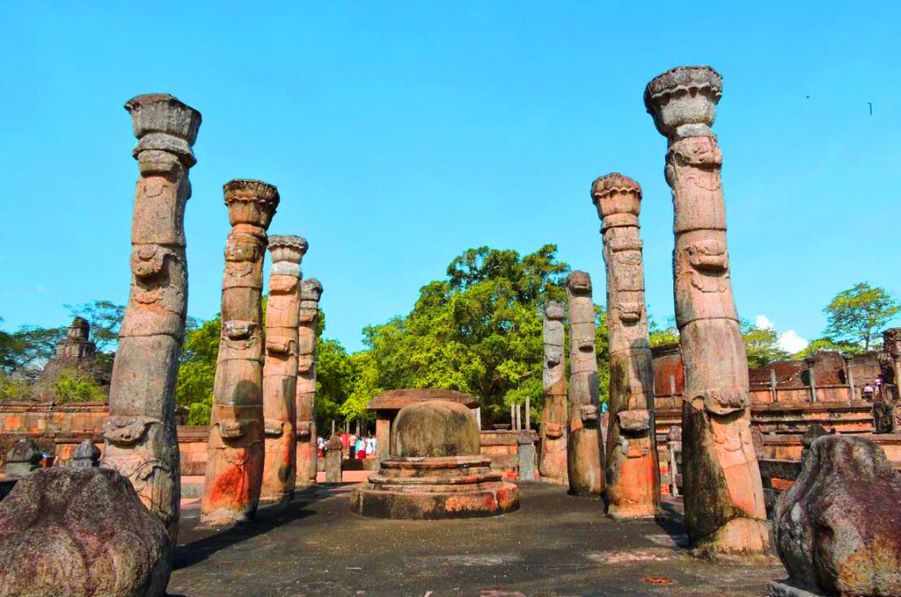The sacred quadrangle is the main highlight inside the Polonnaruwa archaeological site. It is a square-shaped terrace where most of the ancient Buddhist ruins survive. The terrace is originally known as the terrace if the tooth relic (Dalada Maluwa). The entrance is through a flight of stone steps and the remains of a gatehouse. Listed below are the ruins on the terrace.
Vatadage (Circular Relic House) – Polonnaruwa Anceint City
The Vatadage is one of the most beautiful buildings in Sri Lanka. It is certainly the most beautiful example of a traditional entrance in Sri Lanka. Exquisite guard stones, moonstones, balustrades, and carved stone steps adorn the two terraces leading up to the main shrine in the middle of the circular chamber. In the sacred chamber, four Buddha statues face the four cardinal directions. Behind the Buddhas is a small stupa monument where the Sacred Tooth Relic was enshrined. Remnants of the pillars that supported a wooden roof to the chamber are left around the circular inner chamber.
Thuparama – UNESCO World Heritage Site Polonnaruwa
Thuparama is the oldest image house in Polonnaruwa It is dated to eleventh century CE. This brick-built vaulted shrine is decorated with elaborate carvings. Crystalline limestone Buddhas sit in the deepest part of the image house. The limestone makes the statues sparkle when exposed to natural light. A thick wall cools down the inner chamber. There is a staircase leading up through this wall to get a birds-eye view of the shrine.
Nissanka Latha Mandapaya (Nissanka’s Lotus Pavillion)- Polonnaruwa Sri Lanka
Nissanka Latha Madapaya is a masterpiece of Sri Lankan architecture and stone carvings. Elegantly decorated stone pillars take the shape of lotus stalks rising upwards. These pillars supported a roof of unknown shape. A latticed stone fence surrounds the pillared pavilion. An inscription nearby states that King Nissankamalla used this pavilion for royal pirith (Buddhist stanza) chanting ceremonies.
Shiva Devala No. 1 and No. 2
The ancient city of Polonnaruwa gained prominence under the South Indian “Chola” invaders. There is a high influence of the Hindu culture and religion within Polonnaruwa. About 14 Hindu shrines were excavated within the site. They stand side-by-side Buddhist shrines. The most well preserved of the Hindu buildings are named Shiva Devala No. 1 and No. 2. They were built similarly to the South Indian temples by using a rock interlocking system. Shiva Devala No 1 is the oldest building in the Polonnaruwa archaeological site.






